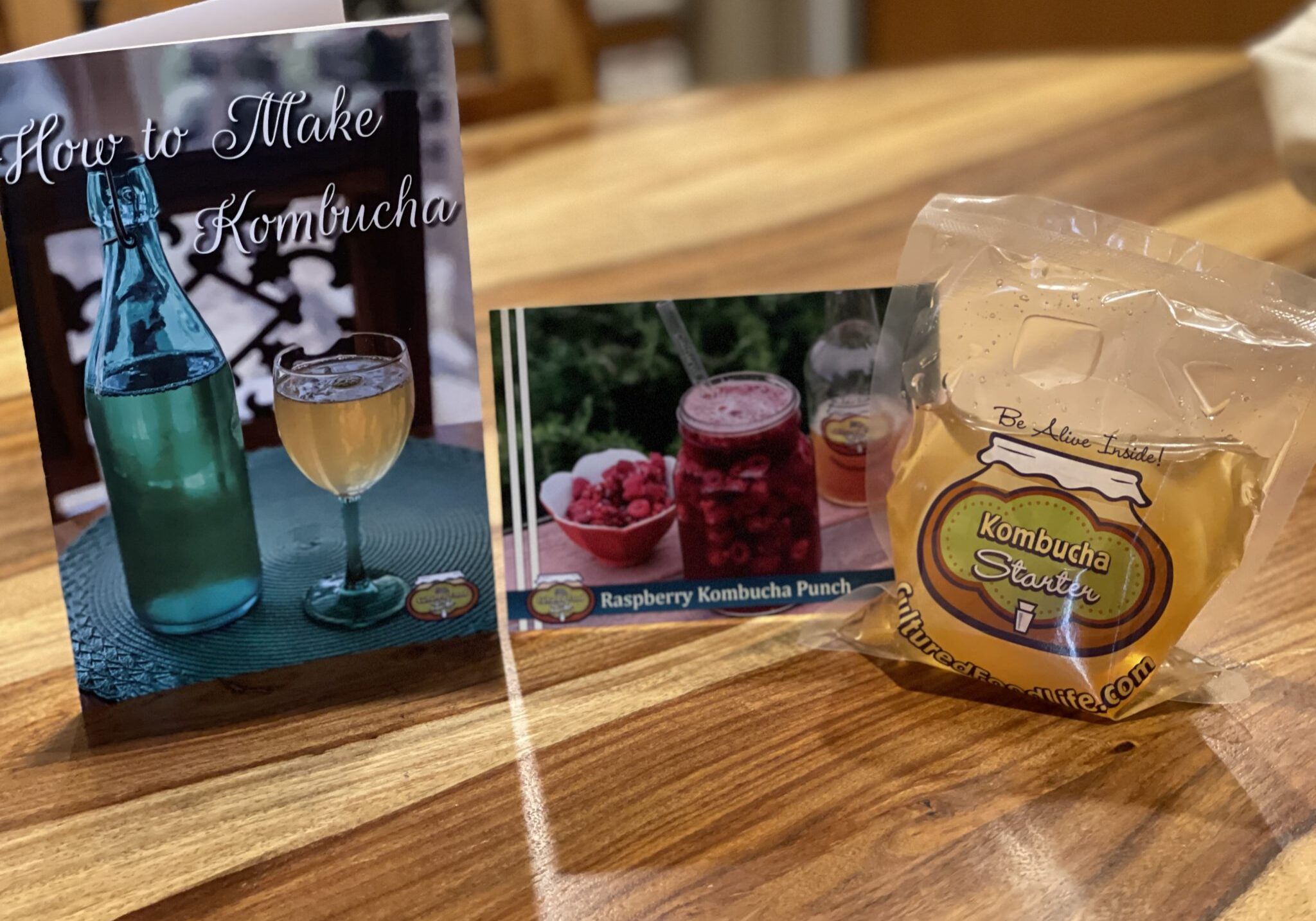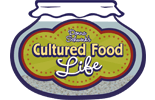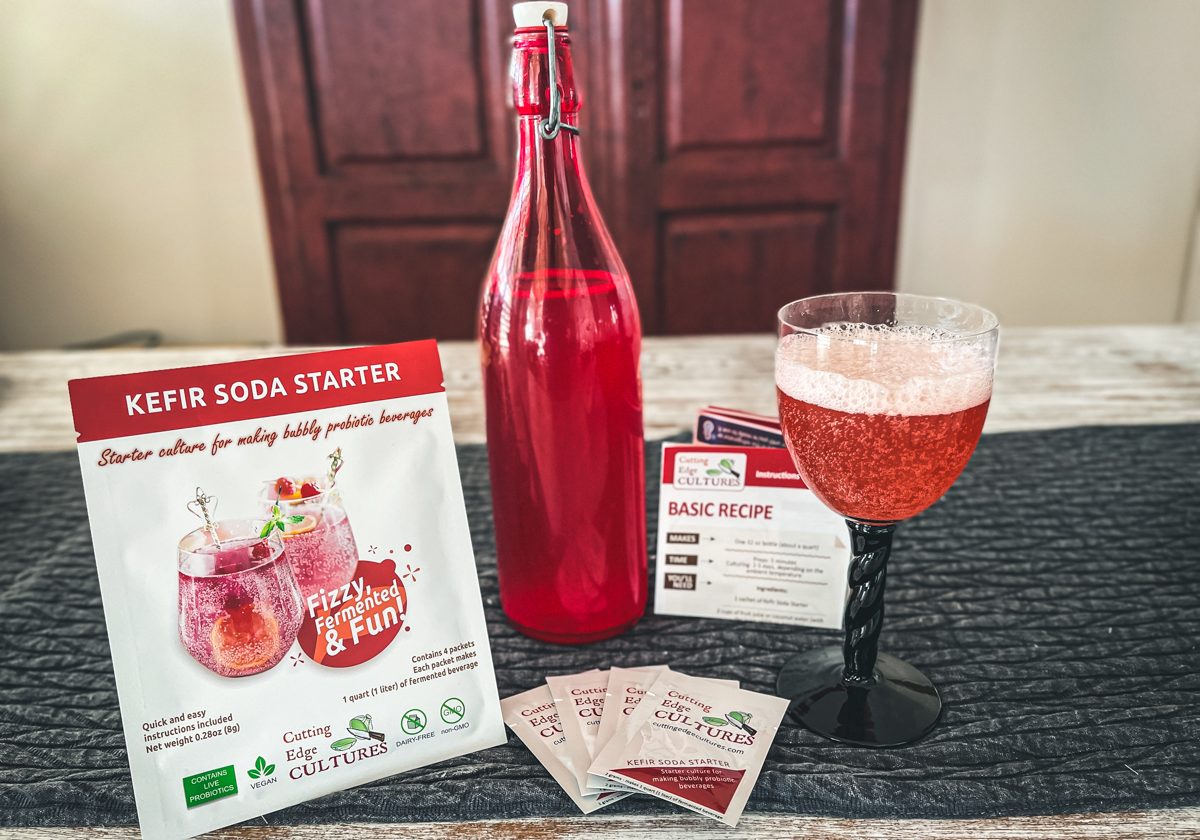
Kombucha vs Kefir Soda: What Is the Difference?
Kombucha & Kefir Soda
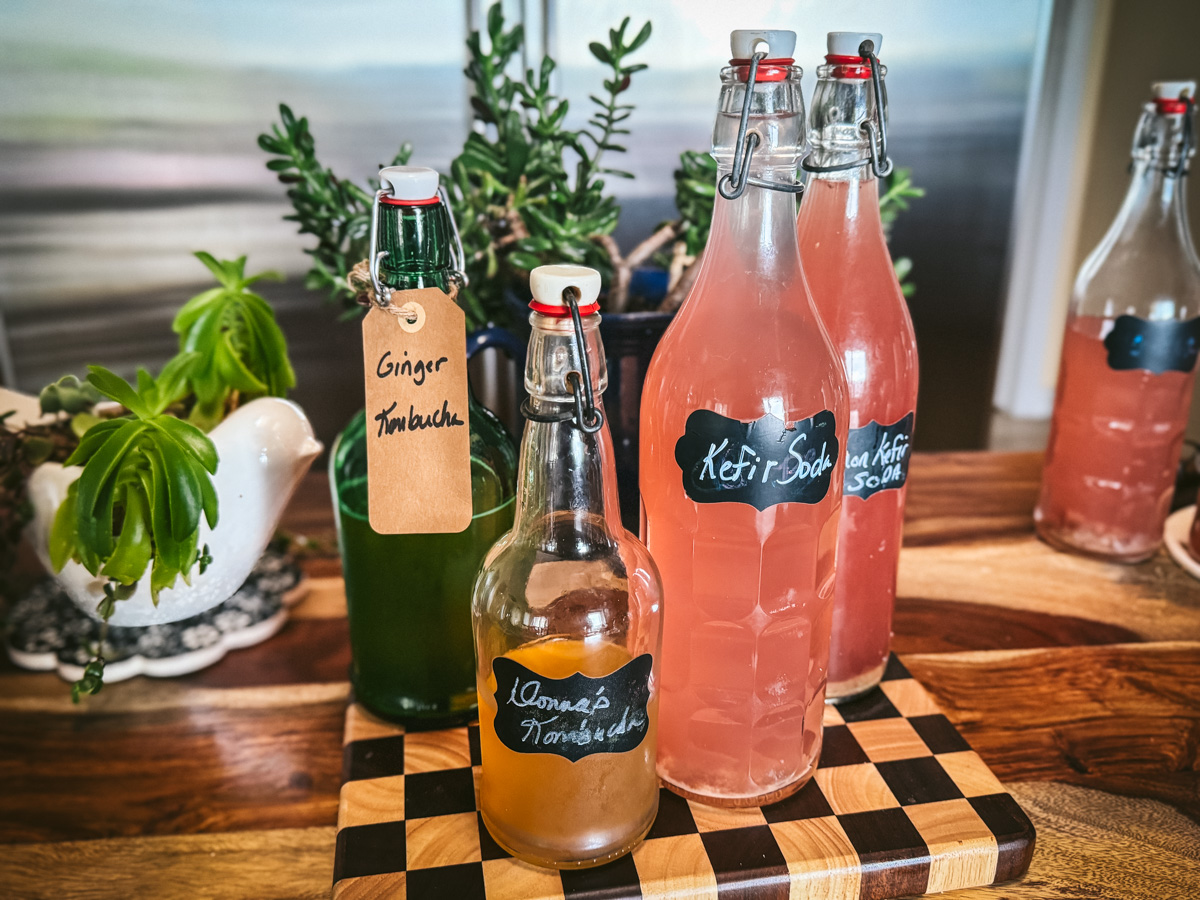 Kombucha and kefir soda are both fermented probiotic drinks, and boy, are they delicious and good for you. They are bubbly, living, raw beverages that tend to have minds of their own. They ferment differently in the winter than in the summer, so understanding the process can make a huge difference. Each of them has different bacterial and yeast species, so they do different things. Both of these drinks have the probiotic yeast called Saccharomyces boulardii. S. boulardii is one of the most researched probiotics and has been used worldwide to support gastrointestinal health. S. boulardii is resistant to antibiotics, heat, and stomach acids, and it makes both kombucha and kefir soda bubbly!
Kombucha and kefir soda are both fermented probiotic drinks, and boy, are they delicious and good for you. They are bubbly, living, raw beverages that tend to have minds of their own. They ferment differently in the winter than in the summer, so understanding the process can make a huge difference. Each of them has different bacterial and yeast species, so they do different things. Both of these drinks have the probiotic yeast called Saccharomyces boulardii. S. boulardii is one of the most researched probiotics and has been used worldwide to support gastrointestinal health. S. boulardii is resistant to antibiotics, heat, and stomach acids, and it makes both kombucha and kefir soda bubbly!
How To Make Kombucha and Kefir Soda
Kombucha is prepared by adding starter tea and a kombucha culture (SCOBY) to sweet tea. The mixture is fermented for 7-14 days. Consult our instructions and a video on making kombucha for more information. Click here
Kefir soda is prepared by adding a starter culture to half juice and water or coconut water. The first batch takes about 5 days to ferment, and using a small portion of this as a starter, the subsequent batches take about a day to ferment. View our detailed instructions and video on making kefir soda. Click here
These special microbes in fermented foods have taught me more about who I am than just about anything else I have ever encountered. I really have a hard time choosing between the two since they have so many benefits unique to each one. Let's dive into the difference and what that means for you.
What's In Kombucha and Its Benefits
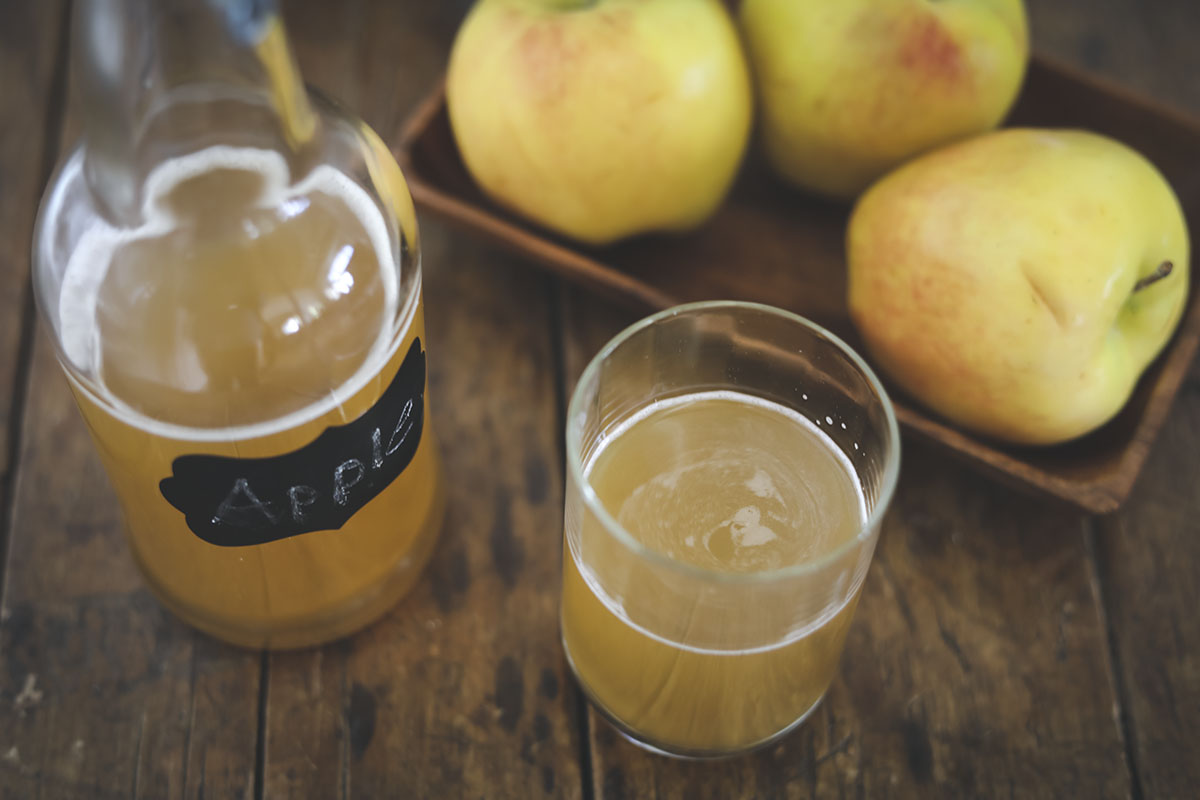 Here are the bacteria and yeasts in kombucha: Bacillus Coagulans, Saccharomyces Boulardii, Gluconacetobacter, Zygosaccharomyces kombuchaensis, Brettanomyces, Acetobacter xylinum, and Gluconobacter.
Here are the bacteria and yeasts in kombucha: Bacillus Coagulans, Saccharomyces Boulardii, Gluconacetobacter, Zygosaccharomyces kombuchaensis, Brettanomyces, Acetobacter xylinum, and Gluconobacter.
Kombucha has antibiotic-resistant probiotic yeast: In addition to the good bacteria in kombucha, there is a special probiotic yeast called Saccharomyces Boulardii (S. boulardii) that is resistant to antibiotics, which makes it incredibly useful for maintaining a healthy gut when treating an illness with antibiotics.2
Kombucha protects the stomach lining: It neutralizes toxins produced by harmful pathogens and sends out a signal to the body to reduce inflammation that can lead to a number of negative health outcomes. The probiotic in kombucha (S. boulardii) can also act as a decoy to harmful pathogens. It attracts and binds with the pathogens, keeping them from attaching to the intestinal wall and doing damage. 3
Kombucha reduces joint pain: Kombucha contains acetic acid, which not only helps stabilize blood sugar but also contains an analgesic (pain reliever) and anti-arthritic compounds which help remove toxins that may have accumulated in joints causing pain and inflammation. Other compounds in kombucha include mucoitin sulfate, heparin and hyaluronic acid. These help provide lubrication and protection to existing joint tissue. 4
Kombucha assists the liver in detoxification: Kombucha is full of glucuronic acid, which plays a part in one of the body's most important detoxification processes: glucuronidation, a process in which glucuronic acid binds to toxins and transforms them so the kidneys can easily eliminate them. The liver produces this substance naturally, but sometimes the body can’t keep up with the number of pollutants that it comes into contact with. The extra glucuronic acid in kombucha basically helps make up the difference. 5
Kombucha may help your kidneys: Kombucha may help kidneys eliminate environmental pollutants. Every day, your kidneys process about 200 quarts of blood to remove and eliminate chemicals and toxins. Calcium builds up in the blood tissues and can cause calcification throughout the body, which can cause calcification in the kidneys (aka kidney stones). Kombucha has been used to prevent the kidneys from forming kidney stones by helping to purify and remove toxins. 6,7
Kombucha may alleviate constipation and diarrhea: The probiotic S. boulardii in kombucha is actually being used to treat all sorts of bowel disorders including Clostridium difficile, acute diarrhea, antibiotic-associated diarrhea, some parasitic forms of diarrhea, and other gastrointestinal disorders. It also has a record of helping reduce the symptoms of irritable bowel syndrome (IBS).8
Kombucha - Preventive effects on heart, weight, cholesterol, and blood glucose. There is a new study on kombucha, published in the Journal of Food and Science.9 The research was carried out to understand the preventive effect of kombucha on heart weight, blood glucose, total protein, lipid profile and cardiac markers in rats with heart damage. They found that kombucha tea significantly decreased cholesterol, triglycerides, LDL, and VLDL while increasing the levels of HDL. Similarly, a decrease in leakage of cardiac markers from the myocardium was also observed. When I posted this on my Facebook page, several people commented that their cholesterol levels had gone down, and quite significantly, since they started to drink kombucha.
![]()
From my own self-experiments on my own body, I have found kombucha to be of great benefit to certain afflictions. Check out the 10 Reasons I have kombucha every day. Kombucha is fun to make and I can show you how to brew it successfully. I encourage you to discover the power that fermented foods can bring to your life. You can literally drink a bottle of kombucha and feel it lift your sense of well-being. It makes you feel great.
What's in Kefir soda and its Benefits
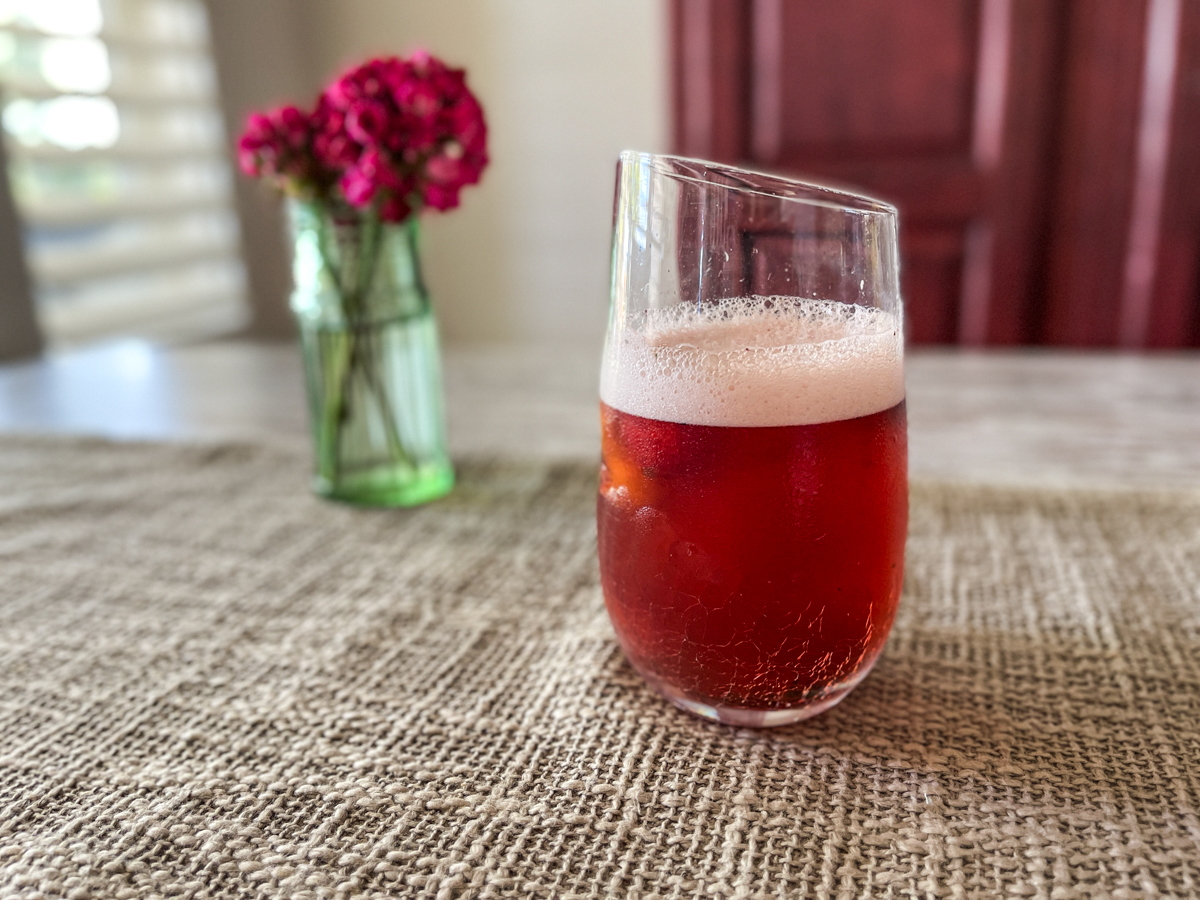 We hand-picked the bacteria and good yeasts for this Kefir Soda Starter and added one of the most important bacteria, Bifidobacteria, which is so important for your immune system. Check out all the different strains and benefits.
We hand-picked the bacteria and good yeasts for this Kefir Soda Starter and added one of the most important bacteria, Bifidobacteria, which is so important for your immune system. Check out all the different strains and benefits.
Leuconostoc mesenteroides and Lactobacillus delbrueckii are both in milk kefir grains and are powerful microbes. Leuconostoc mesenteroides is responsible for initiating the lactic acid fermentation of dairy products, sauerkrauts, and vegetables. It has been reported that Leuconostoc mesenteroides can inhibit the growth of pathogens and also prevent Avian influenza and H1N1. [1,2]
Lactobacillus delbrueckii can help the body break down food, absorb nutrients, and fight off bad organisms that might cause disease. It has been used to aid digestion, prevent diarrhea, and relieve symptoms of irritable bowel syndrome. L. bulgaricus and L. lactis, which are also powerful strains and well-studied probiotic species, were shown to have highly similar DNA to L. delbrueckii, and have since been considered to be subspecies of L. delbrueckii. [3]
Bifidobacterium longum (B. longum) has long been regarded as one of the most beneficial members of the human gut microbiome. Lower levels of this beneficial bacteria have been observed in obese and diabetic individuals and in individuals taking antibiotics. Those suffering from irritable bowel syndrome or inflammatory bowel disease have also shown lower levels of Bifidobacteria as well. B. longum also helps relieve anxiety- and depression-like behaviors.[4] B. longum can inhibit inflammation by regulating the balance of the immune system. It can improve intestinal barrier function. [5]
Saccharomyces boulardii (S. boulardii) is my favorite probiotic yeast. Not only will it make this soda super bubbly, but it also has a lot of health benefits. And, it can't be killed by antibiotics.
They have done over 53 randomized controlled clinical trials, encompassing 8,475 subjects, that investigated the safety and efficacy of S. boulardii. The studies were done in pediatric and adult patients in which they found it had an 81% efficacy rating. [6]It is now used to treat C. diff, acute diarrhea, antibiotic-associated diarrhea, some parasitic forms of diarrhea, and other gastrointestinal disorders. [7,8]
S. boulardii is unrelated to the yeast Candida albicans and other Candida species. When Candida proliferates, it will decrease the acidity of the gut, making it susceptible to harmful bacteria and yeasts. S. boulardii exerts the opposite effect producing lactic and other acids known to inhibit potentially harmful Candida yeast species. [9]
S. boulardii is absent from the natural gut since it is a transient yeast that passes through the intestines after ingestion. If taken every day, it provides a steady stream in the colon within three days and is cleared from the stools two to five days later.[10,11] It does not attach to the mucosal cell lining, but works its magic on you as it moves through the gastrointestinal tract.
When S. boulardii is present, it inhibits toxins from binding to intestinal receptors and steals the metabolites it needs to survive. Thus, many pathogens pass out of the body, unable to survive in the presence of this powerful probiotic. They even found that other pathogen strains like E. coli, Salmonella typhimurium, and S. typhi adhere to the surface of S. boulardii, thus preventing them from attaching to the mucosal lining and passing through the body rendering them harmless.
Lab results of Kefir Soda
These are the results for the two recipes that we tested after four days of fermentation. Your results may differ depending on the specific ingredients that you use, the fermentation times and temperatures, and other variables. Using coconut water makes the most probiotics!
Listen To My Podcast
Kombucha and kefir soda are fermented probiotic drinks and boy, are they delicious. They are bubbly, living, raw beverages that tend to have minds of their own. Each of them has different species, so they do different things. Let me tell you about the benefits of each of these probiotic sodas. Tune in to learn more.
References:
- https://www.ncbi.nlm.nih.gov/pmc/articles/PMC4542552/
- https://www.ncbi.nlm.nih.gov/pmc/articles/PMC3296087/
- https://www.ncbi.nlm.nih.gov/pmc/articles/PMC2868213/
- https://www.ncbi.nlm.nih.gov/pmc/articles/PMC6027349/
- S. Fallon, Nourishing Traditions (Washington, D.C: New Trends Publishing, 1999): 596.
- Dufresne and E. Farnworth, “Tea, Kombucha, and Health: A Review,” Food Research International 33, no. 6 (July 2000):409–21: abstract at https://www.sciencedirect.com/science/article/pii/S0963996900000673.
- O.A. Gharib, “Effects of Kombucha on Oxidative Stress Induced Nephrotoxicity in Rats,” Chinese Medicine 4, no. 23 (November 2009): https://www.ncbi.nlm.nih.gov/pmc/articles/PMC2788564/pdf/1749-8546-4-23.pdf.
- C.H. Choi et al., “A Randomized, Double-blind, Placebo-controlled Multicenter Trial of Saccharomyces boulardii in Irritable Bowel Syndrome: Effect on Quality of Life,” Journal of Clinical Gastroenterology 45, no. 8 (September 2011): 679–83: abstract at https://www.ncbi.nlm.nih.gov/pubmed/21301358; S. Uhlen, F. Toursel, and F. Gottrand, Association Française de Pédiatrie Ambulatoire, “Treatment of Acute Diarrhea: Prescription Patterns by Private Practice Pediatricians,” Archives de Pédiatrie 11, no. 8 (August 2004): 903–7: abstract at http://www.ncbi.nlm.nih.gov/pubmed/15288079.
- https://www.bioportfolio.com/resources/pmarticle/1284471/Myocardial-potency-of-Bio-tea-against-Isoproterenol-induced-myocardial-damage-in-rats
- https://www.sciencedirect.com/topics/agricultural-and-biological-sciences/leuconostoc-mesenteroides/
- https://pubmed.ncbi.nlm.nih.gov/29847863/
- https://pubmed.ncbi.nlm.nih.gov/23194812/
- https://onlinelibrary.wiley.com/doi/10.1002/brb3.2453
- https://www.ncbi.nlm.nih.gov/pmc/articles/PMC8324359
- Review article: yeast as probiotics -- Saccharomyces boulardii.
- A randomized, double-blind, placebo-controlled multicenter trial of saccharomyces boulardii in irritable bowel syndrome: effect on quality of life.
- [Treatment of acute diarrhea: prescription patterns by private practice pediatricians].
- Systematic review and meta-analysis of Saccharomyces boulardii in adult patients
- Saccharomyces boulardii CNCM I-745 supports regeneration of the intestinal microbiota after diarrheic dysbiosis – a review
- https://www.ncbi.nlm.nih.gov/pmc/articles/PMC4733292/
Are you on the list?
Sign up today and I'll send you my free Getting Started Guide!
Each week I'll send you updates, tips, recipes, and more! You might even be a winner of my weekly giveaway! (starter cultures, memberships, and more!)
Come be a part of my cultured food family!

